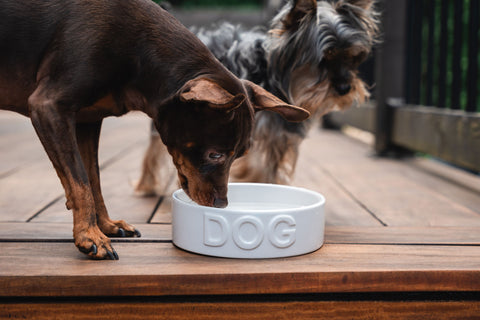
Complete Guide to Preventing Bacterial Contamination in Pet Bowls
An eye-opening study conducted in 2006 raised serious concerns about the contamination of pet bowls. Across 32 different household surfaces, pet dishes were ranked 9th in terms of level of bacterial contamination, with a third of them harboring resistant strains of medically important microbes. Disturbing findings, such as the presence of C. Difficil (a dangerous pathogen) in greater quantities in dog bowls than in toilets , highlight the critical importance of maintaining rigorous hygiene of these utensils.
ㅤ

1. Choosing the pet bowl: The importance of the material
When choosing a bowl for your pet, opt for materials that are non-porous and easy to clean. Here are some options to consider:
-
Stainless Steel: Scratch resistant and easy to clean, stainless steel is a popular choice for pet bowls due to its durability and ability to maintain hygiene.
-
Glass: Glass bowls are also a safe and hygienic option, providing a smooth, easy-to-clean surface while being free of potentially harmful chemicals.
-
Ceramic: Ceramic bowls are often appreciated for their aesthetics and their variety of designs. Be sure to choose lead-free, food-grade ceramic to avoid contamination.
-
BPA-free plastic: If you opt for plastic bowls, make sure they are made from BPA-free plastic to reduce health risks for your pet.
ㅤ
2. Regular Cleaning: An Essential Routine
Establish a regular cleaning routine, making sure to clean bowls at least once a day, and after every meal if your pet is fed a raw diet. Water bowls should be cleaned more frequently to prevent biofilm formation. Use a mild dish soap and a clean brush for effective cleaning.
3. Proper drying: Avoid stagnant moisture
After cleaning, be sure to let the bowls air dry completely. Avoid using towels that could introduce germs, encouraging bacterial growth.
ㅤ
ㅤ
4. Periodic disinfection: Eliminate germs thoroughly
To eliminate residual germs, plan to periodically disinfect the bowls. You can soak them in a solution of water and white vinegar or place them in the dishwasher. Be sure to rinse the bowls thoroughly after disinfection to remove any potentially harmful residue.

5. Monitoring and replacement: Guarantee optimal hygiene
Check the condition of the bowls regularly. Replace them if they are damaged or cracked, especially plastic ones which tend to scratch more easily, which could encourage the retention of bacteria.
Preventing bacterial contamination in pet bowls is essential to ensuring the health and well-being of our four-legged friends. By following these simple but effective tips, you can significantly reduce the risk of spreading disease and ensure a clean and safe environment for your pets. Therefore, investing time in regular bowl maintenance and hygiene should be a priority for every responsible pet owner.
You might also like these articles:
The dangers of winter for your dogs: 3 tips to avoid frostbite and irritation
How to calculate the ideal ration for our pets
Grain-Free Food for Dogs and Cats: Prevent Disease and Optimize Their Health


Comments (0)
There are no comments for this article. Be the first one to leave a message!